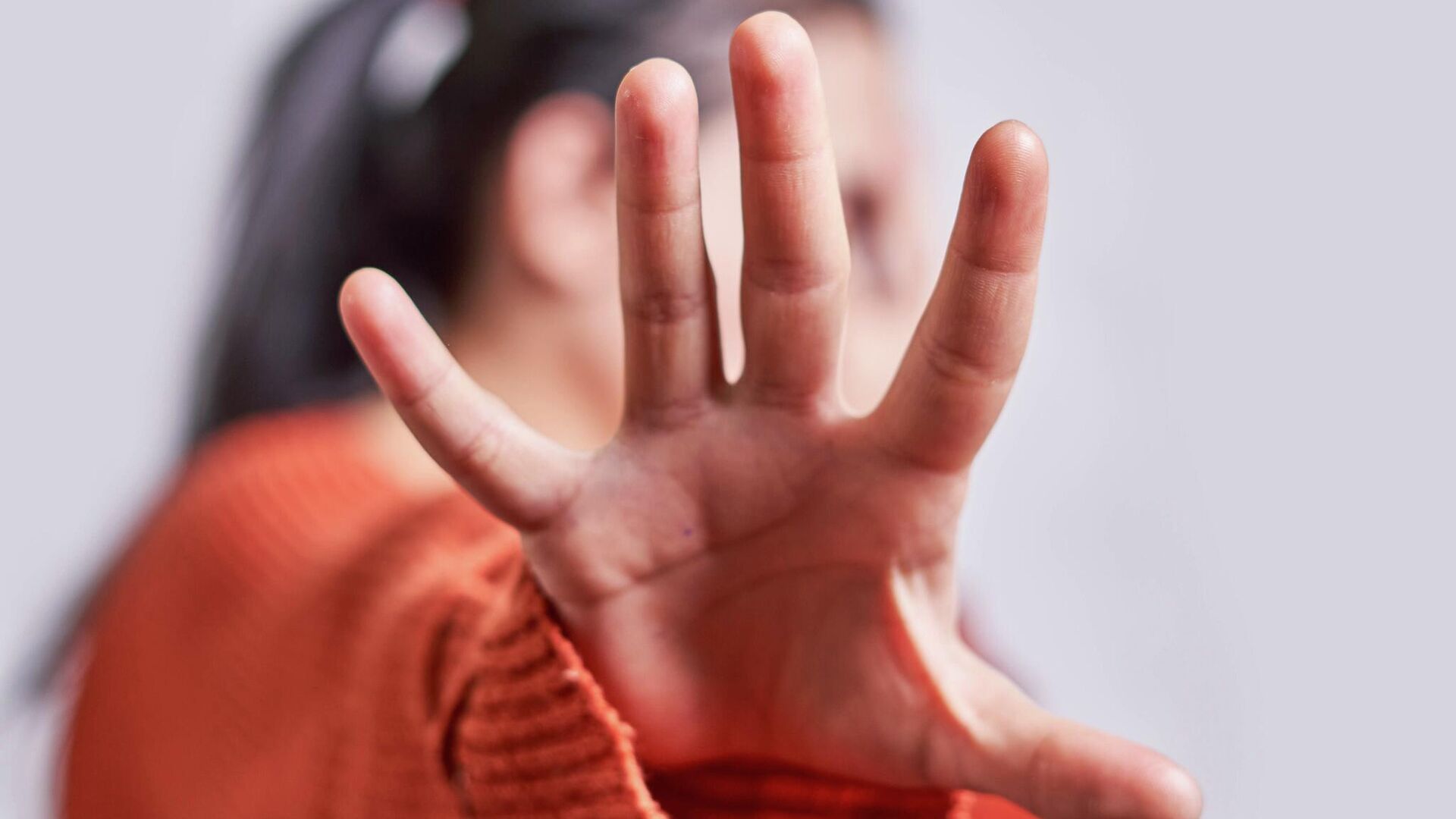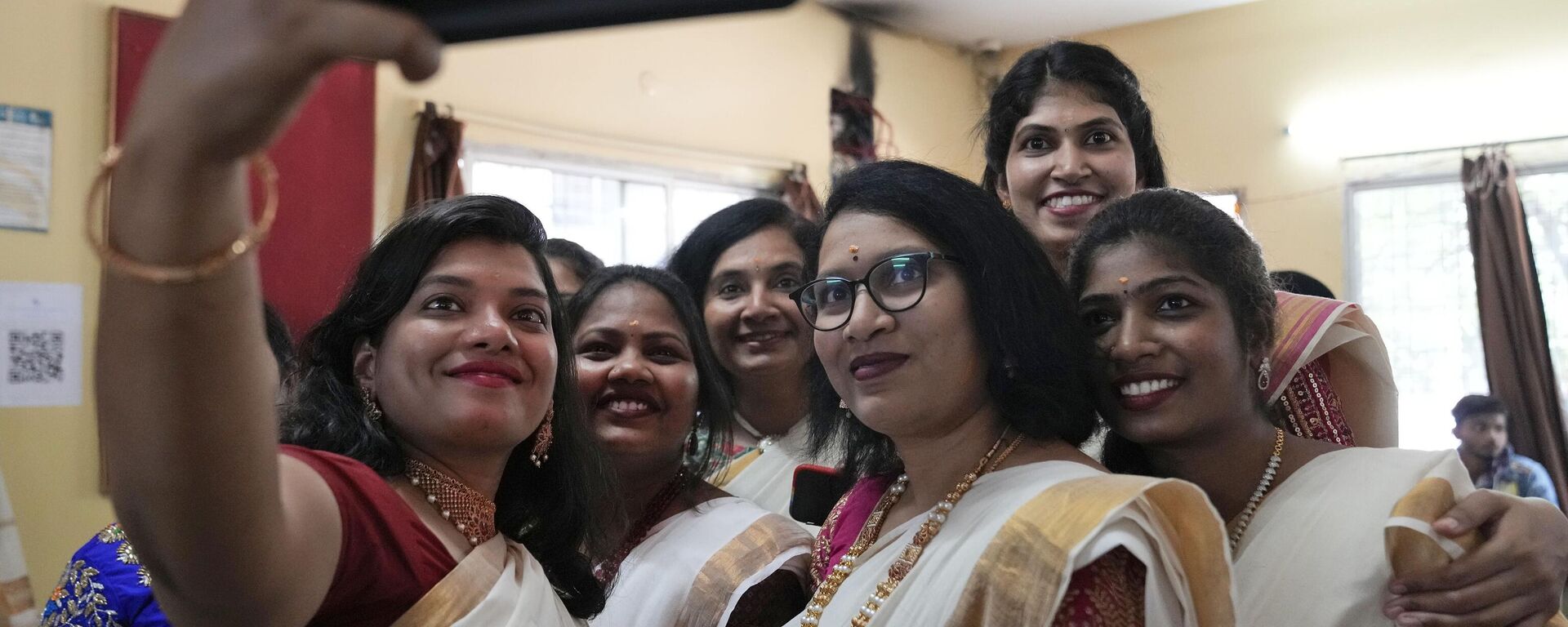https://sputniknews.in/20231125/what-is-causing-rise-in-violence-against-women-in-india-5561538.html
What is Causing Rise in Violence Against Women in India?
What is Causing Rise in Violence Against Women in India?
Sputnik India
Indian social activists and advocates shed light on the reasons behind the alarming increase in violence against women in India, offering effective strategies to combat this "social" evil and build a safer space for all.
2023-11-25T13:59+0530
2023-11-25T13:59+0530
2023-11-25T14:42+0530
sputnik exclusives
india
uttar pradesh
rajasthan
violence against women
domestic violence
crime
organised crime
divorce
social uplifment
https://cdn1.img.sputniknews.in/img/07e6/0c/1c/286008_0:35:2048:1187_1920x0_80_0_0_05ad79f6584584de51f050d528919c49.jpg
Women around the world face numerous challenges and live in constant fear of abuse, whether it be domestic violence, sexual assault, kidnapping or murder.Indian social activists and advocates shed light on the reasons behind the alarming increase in violence against women in India, offering effective strategies to combat this "social" evil and build a safer space for all.Violence Against Women: DataViolence against women remains a disturbing and widespread violation of human rights around the world.Worldwide, an estimated 736 million women - nearly one in three - have been subjected to physical or sexual violence at least once in their lives, according to a World Health Organization (WHO) report.According to the latest available data from the National Crime Records Bureau (NCRB) 2021, a total of 428,278 cases of crimes against women were registered in India in 2021, showing an increase of 15.3% over 2020.Over a period of six years, the number of cases has increased by 26.35%, jumping from 338,954 in 2016.The highest number of crimes against women were reported under the category of 'cruelty by husband or his relatives' (31.8%), followed by 'assaulting women with intent to outrage their modesty' (20.8%), 'kidnapping and abduction of women' (17.6%) and 'rape' (7.4%).According to renowned social activist Ranjana Kumari, director of the Centre for Social Research and chairperson of Women Power Connect, issues such as domestic violence, sexual assault, harassment and dowry-related violence persist because of entrenched cultural norms, weak legal structures and social inequalities.Unreported CasesUttar Pradesh, Rajasthan, and Maharashtra recorded the highest number of crimes against women, with 56,083, 40,738, and 39,526 incidents respectively. On the other hand, the Union Territories of Ladakh and Lakshadweep recorded the lowest number of crimes, with only 18 and 9 incidents respectively.Ishanee Sharma, Advocate & Managing Partner at IS Law Offices, pointed out that the exact number of cases is very difficult to determine as many cases go unreported.Rise in Domestic ViolenceSharma stressed that domestic violence continues to be a serious problem, with the National Commission for Women registering over 6,900 complaints in 2022 under the category of 'protection of women from domestic violence'.Sharma added that social stigma, poverty, ignorance, low socio-economic and caste status, illiteracy, lower household income, unequal gender norms and less access to education are some of the major factors contributing to violence against women in India.She added that the COVID-19 pandemic has exacerbated violence against women and girls (VAWG).Emotional Abuse & Gaslighting According to Vandana Shah, a renowned divorce lawyer, author, and social entrepreneur, many women who have chosen to work and challenge the conventional notion of being a housewife face emotional abuse and gaslighting.The challenge, says Shah, is that many women know this but find it difficult to break the cycle of abuse.Initiatives To Eradicate Violence Against WomenBy talking to a friend, taking legal action, seeking help from the police or the National Commission for Women and various other women's support groups, women can fight back against the violence they face.Kumari said a comprehensive approach, addressing societal attitudes and legal frameworks, was crucial for real progress.She argued that while initiatives such as legal reforms and awareness campaigns show progress, implementation challenges remain and the need of the hour is to change regressive mindsets and promote gender equality.
https://sputniknews.in/20230907/womens-financial--digital-inclusion-to-boost-economic-growth-un-women-india-representative-4078880.html
india
uttar pradesh
rajasthan
Sputnik India
feedback.hindi@sputniknews.com
+74956456601
MIA „Rossiya Segodnya“
2023
Sangeeta Yadav
https://cdn1.img.sputniknews.in/img/07e6/0c/0f/110602_0:0:641:640_100x100_80_0_0_c298016a79eb02ef8caa9d1f688c12a5.jpg
Sangeeta Yadav
https://cdn1.img.sputniknews.in/img/07e6/0c/0f/110602_0:0:641:640_100x100_80_0_0_c298016a79eb02ef8caa9d1f688c12a5.jpg
News
en_IN
Sputnik India
feedback.hindi@sputniknews.com
+74956456601
MIA „Rossiya Segodnya“
Sputnik India
feedback.hindi@sputniknews.com
+74956456601
MIA „Rossiya Segodnya“
Sangeeta Yadav
https://cdn1.img.sputniknews.in/img/07e6/0c/0f/110602_0:0:641:640_100x100_80_0_0_c298016a79eb02ef8caa9d1f688c12a5.jpg
international day for the elimination of violence against women, sputnik india, strategy, stop violence against women, rise in violence against women in india, violence against women, patriarchy, sexist, abuse, domestic violence, sexual violence, kidnapping, murder, indian social activists, advocate, crime record, violation of human rights world health organisation (who), national crime records bureau (ncrb), cruelty by husband or his relatives', 'assault on women with intent to outrage her modesty' , kidnapping, abduction of women', 'rape', social activist, ranjana kumari, director of centre for social research, chairwoman of women power connect, sexual assault, harassment, dowry-related violence, cultural norms, weak legal structures, social disparities.
international day for the elimination of violence against women, sputnik india, strategy, stop violence against women, rise in violence against women in india, violence against women, patriarchy, sexist, abuse, domestic violence, sexual violence, kidnapping, murder, indian social activists, advocate, crime record, violation of human rights world health organisation (who), national crime records bureau (ncrb), cruelty by husband or his relatives', 'assault on women with intent to outrage her modesty' , kidnapping, abduction of women', 'rape', social activist, ranjana kumari, director of centre for social research, chairwoman of women power connect, sexual assault, harassment, dowry-related violence, cultural norms, weak legal structures, social disparities.
Women around the world face numerous challenges and live in constant fear of abuse, whether it be domestic violence, sexual assault, kidnapping or murder.
Indian social activists and advocates shed light on the reasons behind the alarming increase in violence against women in India, offering effective strategies to combat this "social" evil and build a safer space for all.
Violence Against Women: Data
Violence against women remains a disturbing and widespread violation of human rights around the world.
Worldwide, an estimated 736 million women - nearly one in three - have been subjected to physical or sexual violence at least once in their lives, according to a World Health Organization (WHO) report.
According to the latest available data from the National Crime Records Bureau (NCRB) 2021, a total of 428,278 cases of crimes against women were registered in India in 2021, showing an increase of 15.3% over 2020.
Over a period of six years, the number of cases has increased by 26.35%, jumping from 338,954 in 2016.
The highest number of crimes against women were reported under the category of 'cruelty by husband or his relatives' (31.8%), followed by 'assaulting women with intent to outrage their modesty' (20.8%), 'kidnapping and abduction of women' (17.6%) and 'rape' (7.4%).
According to renowned social activist Ranjana Kumari, director of the Centre for Social Research and chairperson of Women Power Connect, issues such as domestic violence, sexual assault, harassment and dowry-related violence persist because of entrenched cultural norms, weak legal structures and social inequalities.
"Deeply rooted patriarchal attitudes perpetuate violence, while systemic inadequacies in the legal framework and financial dependence on perpetrators trap women in abusive situations. Social stigma and victim-blaming further silence survivors and perpetuate the cycle of violence," said Kumari.
Uttar Pradesh, Rajasthan, and Maharashtra recorded the highest number of crimes against women, with 56,083, 40,738, and 39,526 incidents respectively. On the other hand,
the Union Territories of Ladakh and Lakshadweep recorded the lowest number of crimes, with only 18 and 9 incidents respectively.
Ishanee Sharma, Advocate & Managing Partner at IS Law Offices, pointed out that the exact number of cases is very difficult to determine as many cases go unreported.
"This is largely due to the threat of ridicule or shame on the part of the potential reporter, as well as the immense pressure not to damage the family's honour. For similar reasons, law enforcement officials are more motivated to accept offers of bribes from the family of the accused, or perhaps out of fear of more serious consequences such as honour killings," Sharma told Sputnik India.
Rise in Domestic Violence
Sharma stressed that domestic violence continues to be a serious problem, with the National Commission for Women
registering over 6,900 complaints in 2022 under the category of 'protection of women from domestic violence'.
"These cases accounted for about 23% of the more than 30,900 complaints registered by the NCW in various categories of crimes against women," Sharma said.
Sharma added that social stigma, poverty, ignorance, low socio-economic and caste status, illiteracy, lower household income, unequal gender norms and less access to education are some of the major factors contributing to violence against women in India.
"In patriarchal societies, violence against women is an expression of unequal power relations between men and women... From early childhood, young girls are given less access to education than their male counterparts," said Sharma.
She added that the COVID-19 pandemic has exacerbated violence against women and girls (VAWG).
"It has also exposed and exacerbated deep structural inequalities, reversed decades of progress in women's participation in the labour market, increased the number of women living in extreme poverty, and increased the burden of unpaid care and domestic work, all of which exacerbate the risk factors and drivers of VAWG," Sharma said.
Emotional Abuse & Gaslighting
According to
Vandana Shah, a renowned divorce lawyer, author, and social entrepreneur, many
women who have chosen to work and challenge the conventional notion of being a housewife face emotional abuse and gaslighting.
"It is a new form of violence that I see. Instead of being rewarded for working harder, you are punished for choosing to pursue your career outside the home. It has been seen that a woman's work is always treated as secondary. It has often been perceived that a woman's work interferes with the domestic routine," said Shah.
The challenge, says Shah, is that many women know this but find it difficult to break the cycle of abuse.
"The abuser may make you feel that you have done something wrong. One moment they will be extremely sweet to you and the next they will be violent. Abusers never change. So you have to get out of the cycle of abuse. That is where the gap is, not in the implementation of the laws, which are quite comprehensive," said Shah.
Initiatives To Eradicate Violence Against Women
By talking to a friend, taking legal action, seeking help from the police or the National Commission for Women and various other women's support groups, women can fight back against the violence they face.
“When we talk about violence in general, we need to talk about the empowerment of women. You have to feel the empowerment that comes from self-love. The moment we stop looking for validation from outside and take a stand for ourselves, that is the only time violence will be eliminated. You have to say to yourself that violence in any form is not acceptable," Shah added.
Kumari said a comprehensive approach, addressing societal attitudes and legal frameworks, was crucial for real progress.
"Sustained collective action remains essential for a safer environment for women. Support systems such as crisis helplines have been crucial, and grassroots movements such as #MeToo have sparked conversations. But broader efforts, including systemic overhauls and cultural change, are needed for a society free of violence against women," shared Kumari.
She argued that while initiatives such as legal reforms and awareness campaigns show progress, implementation challenges remain and the need of the hour is to change regressive mindsets and promote gender equality.




